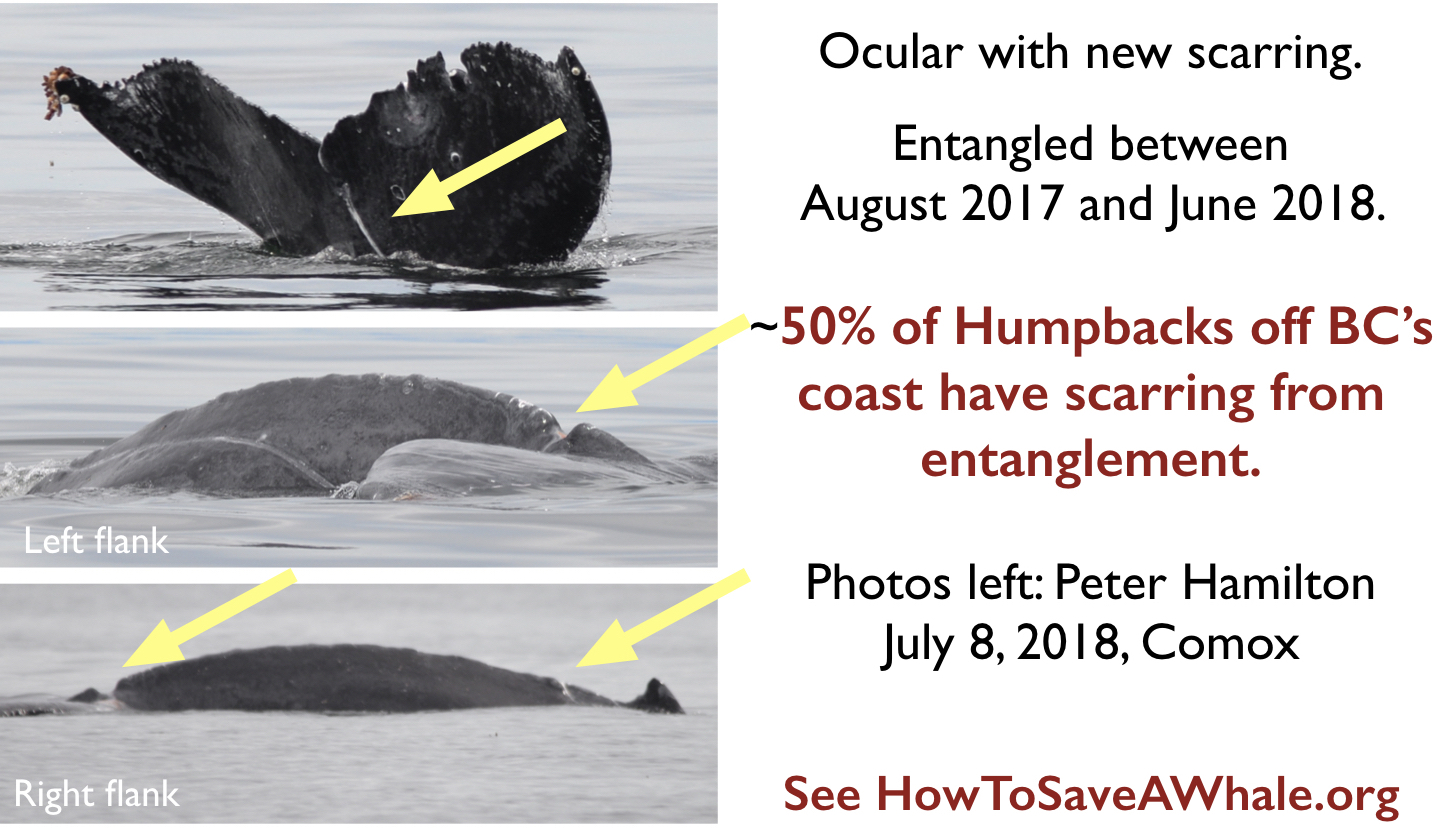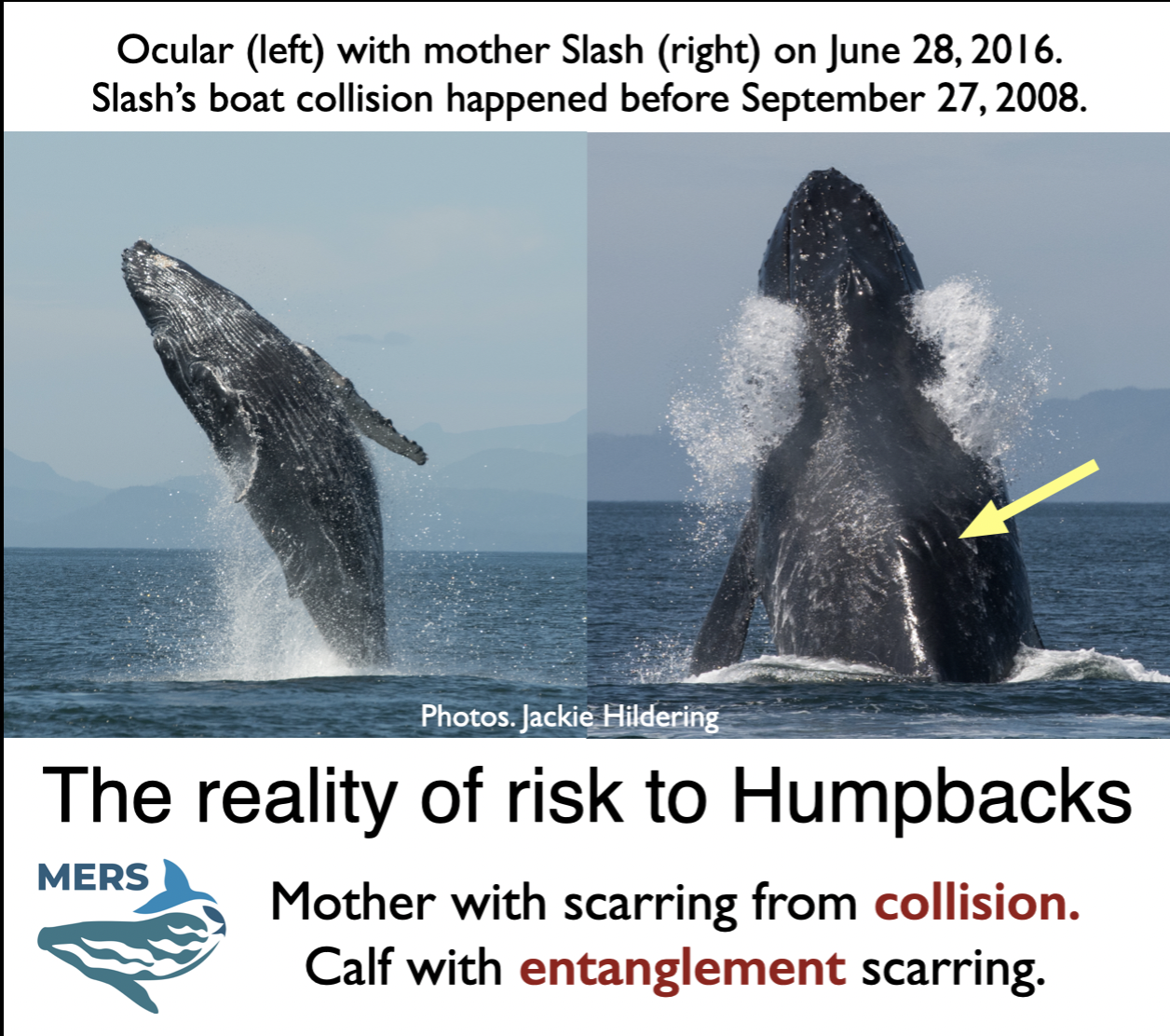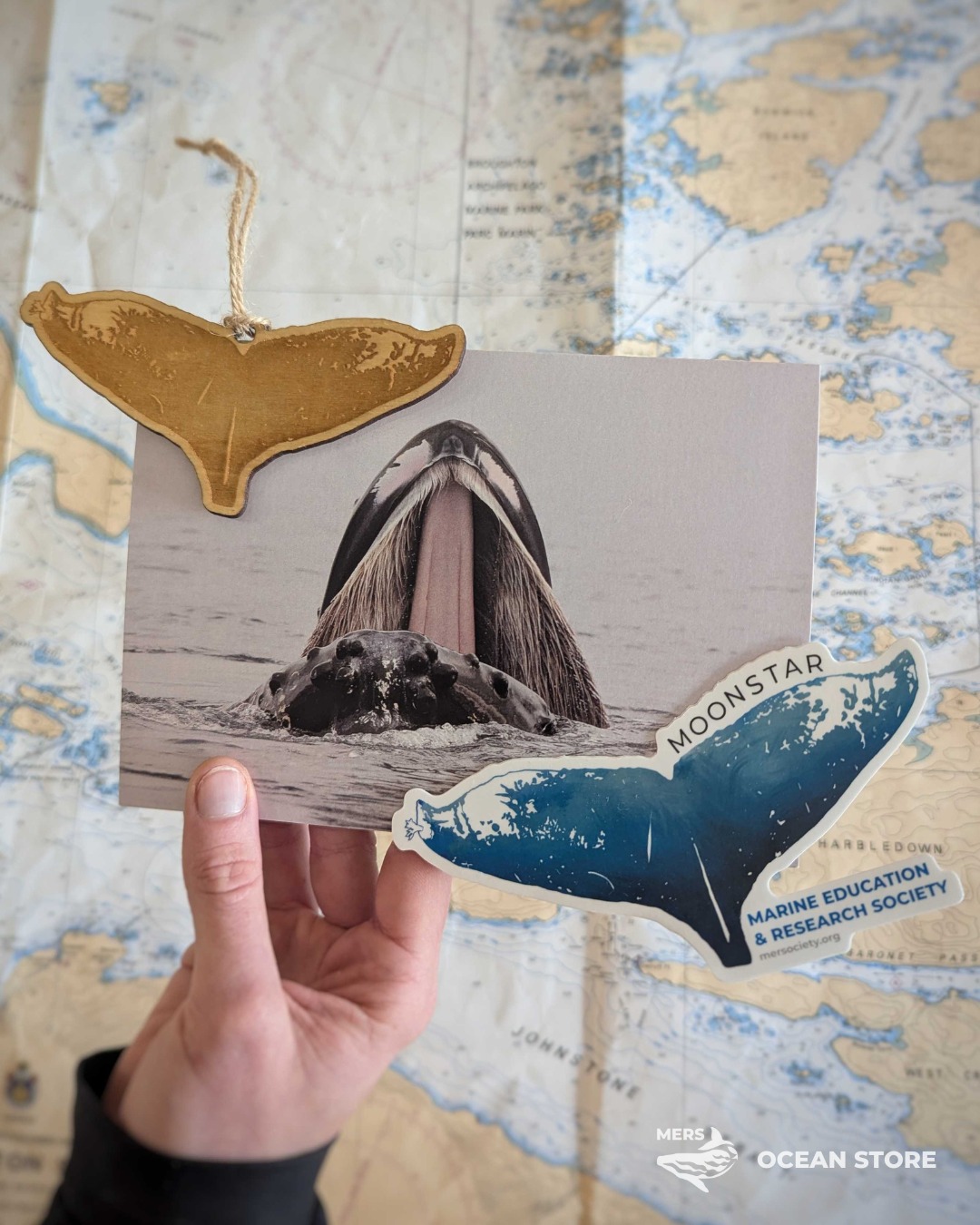Another whale has recently been documented with scarring from entanglement. We’ve identified the whale as Ocular, born in 2016 to Slash (BCY0177). Slash has her nickname because, from the first time we saw her in 2008, she had extreme scarring from a large boat propellor. Ocular’s entanglement scarring was first documented last week.
Ocular and Slash – ambassadors of the realities of the risk to whales of vessel strike and entanglement.
They are not exceptional cases. Our research, done in collaboration with DFO, shows that ~1 in 2 Humpback Whales off BC’s coast have scarring from entanglement. This data provides an indication of how serious the risk of entanglement is but does not reveal how many Humpbacks die after becoming entangled.

How many are hit by boats? We don’t know. We see scarring on some survivors but here too, it is not possible to know how many are hit and die as a result of their injuries. There are whales like KC (BCY0291) that we know have been both hit by a boat and been entangled (twice that we know of in KC’s case).

Thankfully, with the new Marine Mammal Regulations it is now law that such interactions with marine mammals must be reported (all incidents of concern to 1-800-465-4336). But increased public awareness is also very much needed. Please see www.HowToSaveAWhale.org.
Content about what to do if you find an entangled whale is summarized below:
- With great urgency, report the entanglement with location to the DFO Incident Line / VHF 16. 1-800-465-4336.
- Do NOT attempt to remove any fishing gear or rope from the whale as it risks human and whale safety (has led to human death).
- If at all possible, remain with the whale at a distance until trained help arrives or another boat takes over tracking, otherwise the chances of relocating the whale are greatly diminished
- Take whatever video/photos are possible but maintain a distance that doesn’t stress the whale.
Professional training and equipment are needed to assess the entanglement and proceed safely with the greatest chance of success. Often, much of the fishing gear in which the whale is entangled is not visible at the surface. If well-intentioned members of the public remove the gear at the surface, it is made much more difficult to:
1. recognize that the whale is entangled and;
2. disentangle the whale even if it is relocated.
Trailing gear at the surface provides the opportunity for trained responders to attach a tag to track the whale and/or to attach floatation to maintain contact with and slow down an entangled whale. Loss of this gear can significantly reduce rescuers’ ability to save the whale.
July 8th documentation of Ocular’s entanglement injury near Comox by Peter Hamilton, Lifeforce Foundation.



